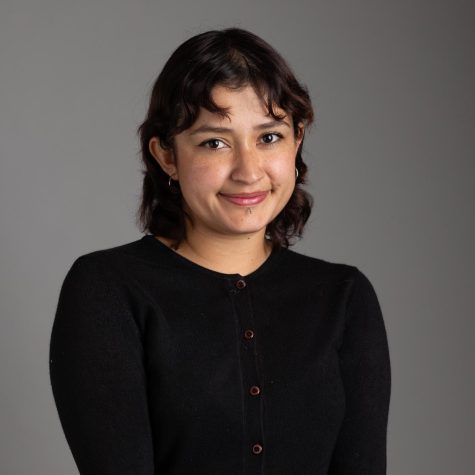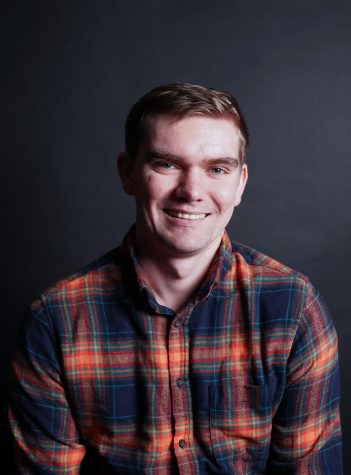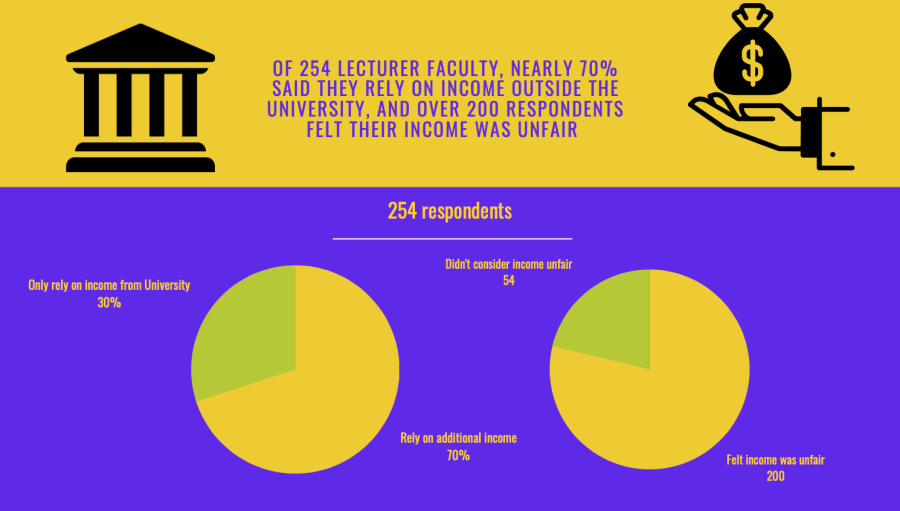




In a recent survey by the Equity for Lecturer Faculty Committee, lecturer faculty reported salaries below the poverty line and unpaid labor.
November 7, 2022
SF State’s lecturer faculty revealed an urgent need for better working conditions in a recent survey by the Equity for Lecturer Faculty Committee.
With over 200 respondents, lecturer faculty said they are underpaid, burnt out due to working at multiple institutions and face job insecurity.
Lecturers make up nearly 60% of SF State’s faculty, which means they are essential to student success across the university.
When it comes to working with students, Drew Borland feels that his 30 years of teaching English and Creative Writing at SF State have been extremely rewarding. But his overall experience as a lecturer faculty has become increasingly stressful.
“I’m not able to survive on the income that I’m paid by the state of California,” Borland said. “I literally wouldn’t be able to pay my medical bills and my rent and food and basic living expenses from my salary.”
Of 254 lecturer faculty, nearly 70% said they rely on income outside of the university, and over 200 respondents felt their salary was unfair.

While lecturer faculty often pick up extra jobs, they also experience a large pay disparity between tenured and tenure-track faculty.
According to the ELF’s survey, from 2003-2018, SF State’s tenured faculty pay kept up with inflation and tenure-track faculty pay increased by 8%, whereas lecturer faculty pay fell by 18% relative to inflation. As a result, the average disparity between lecturer faculty and tenure-track faculty grew from $3,144 to $25,162.
Lecturer faculty receive their salaries on a four-tier pay scale called ranges, which go from A to D. Once granted a range elevation, they receive a 5% pay increase. The average time for a pay range elevation for lecturer faculty at SF State is 13 1/2 years, but it is not automatic.
According to the survey, tenure-track faculty are eligible for promotion after six years and receive a minimum 9% pay increase.
After Borland started teaching at SF State in the ‘90s, he remained in the same pay range for years.
“We need to have a fair and effective system of pay increases as we gain seniority,” Borland said.
Over 95% of SF State’s lecturer faculty called for progressive pay measures in the survey, which means those with lower salaries would get larger raises than those at the top. That way, the pay disparity would level out.
Assistant Vice President of Faculty Affairs Carleen Mandolfo said SF State is aware that CSU salaries lag behind the cost of living in the Bay Area, so the university has contracted with an outside firm to do a faculty salary study.
“The CSU and members of our campus are, as always, lobbying the state for funding that would enable us to provide much-needed support to our faculty,” Mondolfo said in a statement.
According to ELF’s survey, SF State’s lecturer faculty said they were paid better at other community colleges or that they live below the poverty line.
Other respondents called SF State’s pay “criminally low” and reported a large amount of unpaid labor to ensure the health of the department and student success.
“The CSU needs to recognize the damage that has been done then work positively with the CFA [California Faculty Association] to address the issue of lecturer faculty who have been left behind,” Borland said.


